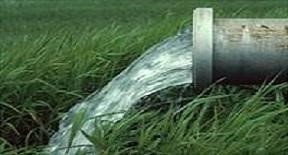Share:
OVERVIEW

Stormwater runoff is generated from rain and snowmelt events that flow over land or impervious surfaces, such as paved streets, parking lots, and building rooftops, and does not soak into the ground. The runoff picks up pollutants like trash, chemicals, oils, and dirt/sediment that can harm our rivers, streams, lakes, and coastal waters. To protect these resources, communities, construction companies, industries, and others, use stormwater controls, known as best management practices (BMPs). These BMPs filter out pollutants and/or prevent pollution by controlling it at its source.
WHAT NATIONAL POLLUTANT DISCHARGE ELIMINATION SYSTEM (NPDES)?
The NPDES permit program addresses water pollution by regulating point sources that discharge pollutants to waters of the United States.
Created in 1972 by the Clean Water Act, the NPDES permit program is authorized to state governments by EPA to perform many permitting, administrative, and enforcement aspects of the program.
WHY STORMWATER MATTERS TO GROUNDWATER
In natural, undeveloped areas, a large percentage of relatively uncontaminated precipitation infiltrates the ground, thus recharging the ground water; the remaining runoff flows to nearby water bodies or evaporates. Natural physical, chemical, and biologic processes cleanse the water as it moves through vegetation and soil and into ground water. Development alters natural systems as vegetation and open spaces are replaced with new areas of impervious surfaces such as roads, parking lots, roofs, and turf, which greatly reduce infiltration and thus ground water recharge. Uncontrolled stormwater runoff collects pollutants such as sediments, pathogens, fertilizers/nutrients, hydrocarbons, and metals, which ultimately contaminate and degrade surface and ground water.
From the Ground Water Report to the Nation
Stormwater Management – Summary Sheet : Full Chapter
Additional Resources
News
- GWPC Provides Comments to EPA on Louisiana Class VI UIC Program Revision Application
- IN OUR OPINION Stormwater – A Beneficial Resource or a Contaminant: Infiltrate With Caution
- GWPC and NGWA Provide Joint Comments to EPA on Proposed 2020 Financial Capability Assessment for CWA Obligations
- Supreme Court rejects EPA’s narrow view of Clean Water Act
Publications
Comments
- Joint Letter to EPA – Lack of Groundwater-Protective Guidance for Stormwater Grant Implementation of Underserved Communities
- Joint Comments on the USEPA on the Proposed 2020 Financial Capability Assessment for Clean Water Act (CWA) Obligations
- Comments on 40 CFR Part 122 [EPA–HQ–OW–2018–0063; FRL–9973–41–OW] Clean Water Act Coverage of ‘‘Discharges of Pollutants’’ via a Direct Hydrologic Connection to Surface Water
- Comments on EPA’s Draft National Water Program Guidance 2018-2019, Publication Number 800D17001
- Comments on proposed rule defining Waters of the United States protected under the Clean Water Act (79FR22188)